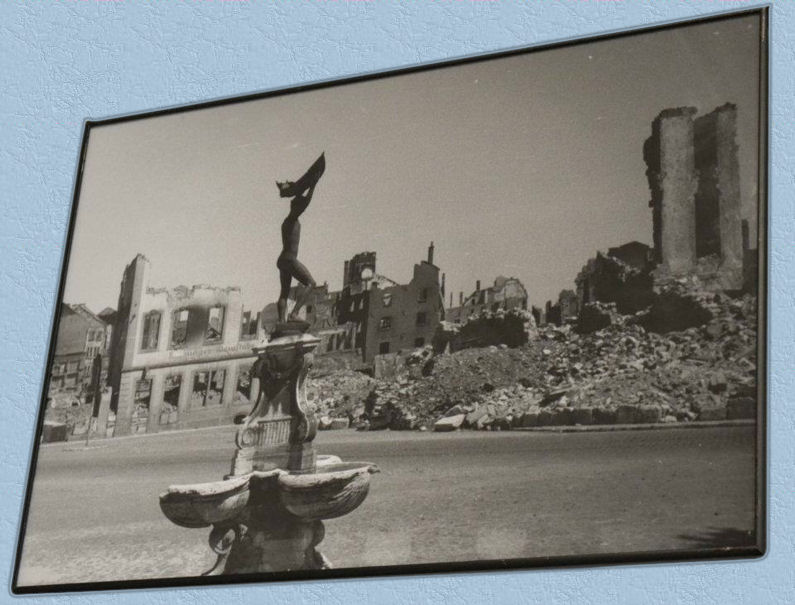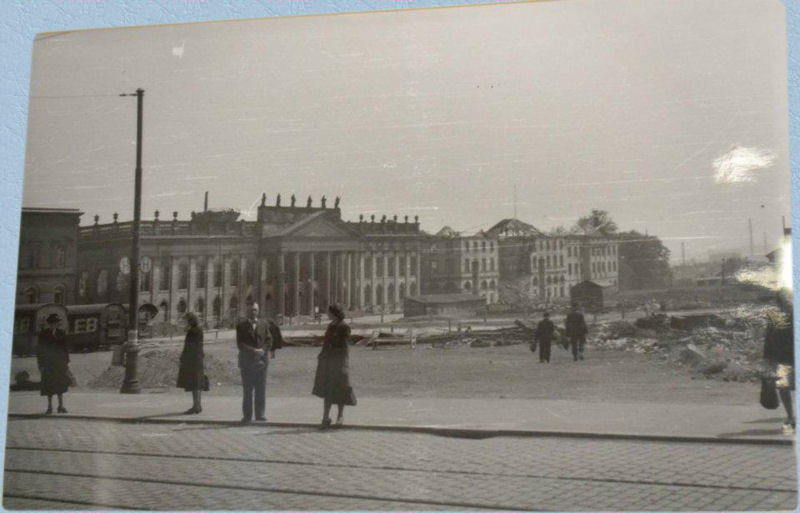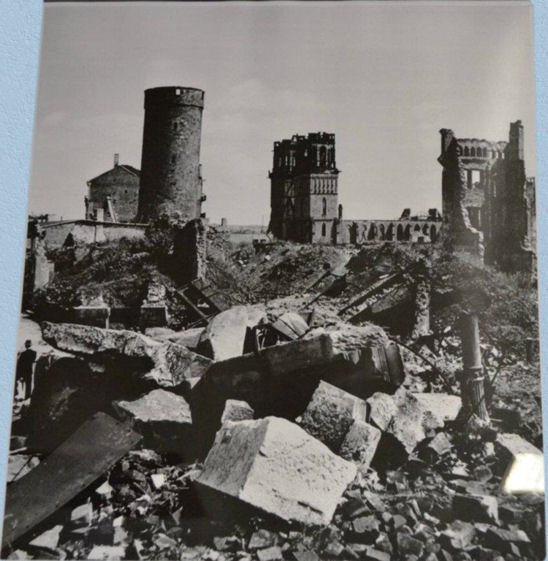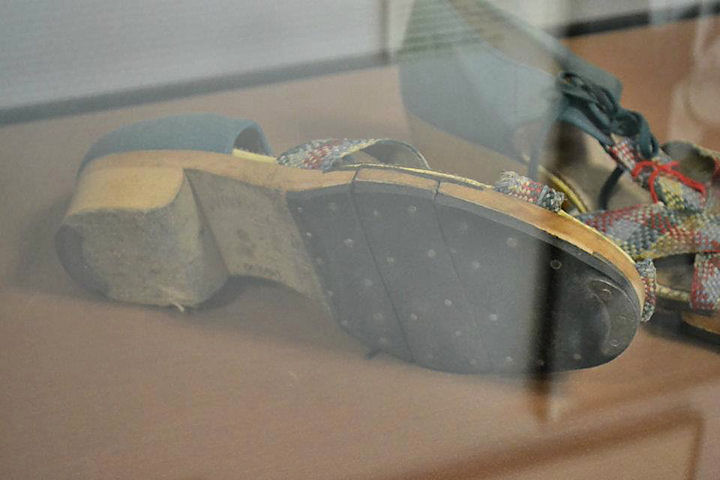View from Königsplatz to Druselturm and Martinskirche.
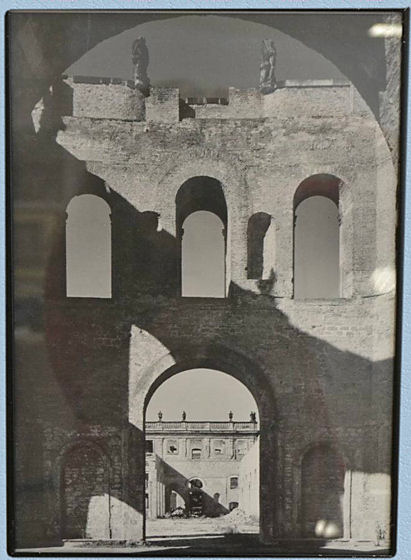
Ruins of the Orangerie, 1954. At this time, the debris in the inner
zone had already been removed. In 1955, this became the central hall of
the exhibition "Bundesgartenschau" (the Biennial Federal Horticulture
Show).

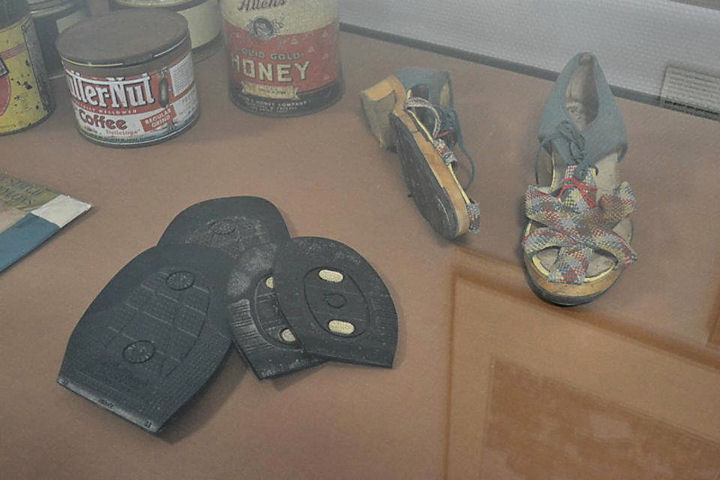
Rubber soles from a U.S. relief supply, 1947. The legendary CARE
packets contained food in the first place but also material in demand
for daily needs.



